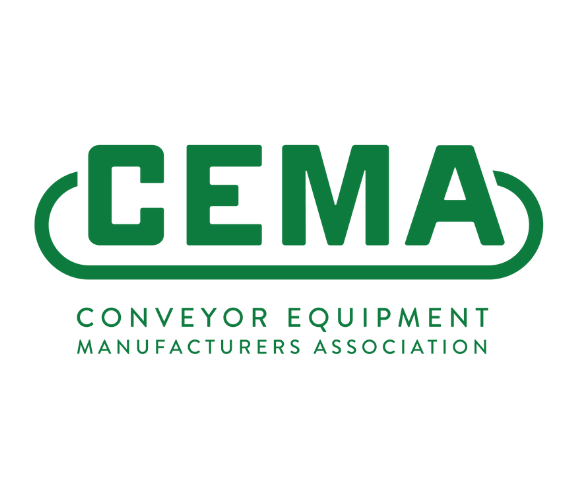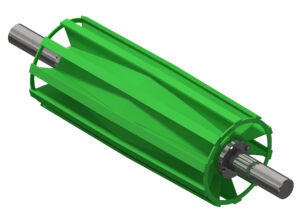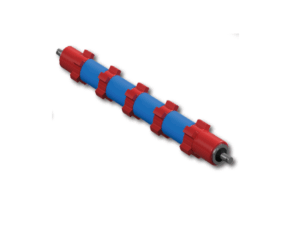In bulk material handling, efficiency and safety go hand in hand. Choosing the right conveyor equipment is critical to keeping operations running smoothly, safely, and cost-effectively. One of the most important tools for making that decision is the CEMA Rating Guide.
The CEMA rating plays a vital role in determining whether a conveyor is suitable for specific applications. In this guide, we’ll explain what CEMA is, break down its classifications, and show how Luff Industries designs conveyor systems that meet or exceed these standards.
What is CEMA? | Conveyor Equipment Manufacturers Association
CEMA stands for the Conveyor Equipment Manufacturers Association, founded in 1933. This trade group sets industry-wide standards for conveyor equipment design, manufacturing, and usage. By establishing clear and concise guidelines, CEMA ensures that conveyor systems are:
- Safe
- Reliable
- Efficient
For operators, understanding and applying the CEMA Rating Guide means choosing conveyor systems that are compatible, durable, and optimized for overall performance.
Understanding CEMA Ratings | Why They Matter
The CEMA Rating Guide is a classification system that helps identify the right conveyor system for specific applications. Ratings are based on load-carrying capacity, belt width, idler spacing, conveyor speed, and the characteristics of the material being transported.
By using these ratings, operators can ensure they select conveyors that are properly matched to their material handling needs – improving safety, efficiency, and long-term reliability.
CEMA Classifications | A to F
CEMA provides six specific classifications, from A through F. Each class is designed for a different capacity level and application:
- CEMA A – Low-capacity, low-speed conveyors with minimal impact loading.
- CEMA B – Low to medium capacity, often used in small quarries or light mining.
- CEMA C – Medium to high capacity, ideal for bulk heavy materials.
- CEMA D – Heavy-duty conveyors designed for abrasive or high-impact materials.
- CEMA E – Extra-heavy-duty conveyors for extreme conditions.
- CEMA F – Highest capacity conveyors for the most demanding applications.
Factors That Determine a CEMA Rating | Key Considerations
Several factors influence the proper CEMA rating for a conveyor system:
- Material type and density
- Conveyor speed
- Belt width and thickness
- Idler spacing
- Lump size of material
Understanding these factors ensures you choose a conveyor system that can handle the load safely while minimizing downtime and wear.
Why Choose Luff Industries | CEMA-Compliant Conveyor Solutions
At Luff Industries, every conveyor product is engineered to align with CEMA standards. That means our equipment isn’t just compliant – it’s built for long-term reliability and performance.
Here’s why operators trust us:
- CEMA-Compliant Solutions – Every Luff product meets or exceeds CEMA ratings to ensure safety, performance, and reduced downtime.
- Customization & Flexibility – From CEMA A through F, our conveyors are tailored to meet your exact requirements.
- Built for Reliability – Using advanced materials and processes, our conveyors thrive in the toughest environments.
- Expert Support – Our technical team guides you through design, installation, and maintenance for maximum efficiency.
CEMA Rating Guide | Reliable Conveyors by Luff Industries
Understanding the CEMA Rating Guide is essential when selecting conveyor systems. With decades of expertise and a dedication to CEMA standards, Luff Industries delivers reliable, durable, and efficient conveyor solutions for industries worldwide.
When it comes to optimizing your material handling operations, you can count on Luff Industries to deliver conveyor systems you can rely on.
Frequently Asked Questions | CEMA Rating Guide
1. What does CEMA stand for, and why is it important in conveyor selection?
CEMA stands for the Conveyor Equipment Manufacturers Association. It establishes and upholds the standards that ensure conveyor systems are safe, compatible, and reliable.
2. How do I determine the right CEMA classification for my conveyor needs?
The correct classification depends on material density, conveyor speed, belt width, idler spacing, and load requirements. Luff Industries’ experts can help identify the best option for your operation.
3. Are all Luff Industries conveyor components CEMA compliant?
Yes. Every conveyor component manufactured by Luff Industries is built to CEMA standards for maximum performance and safety.
4. Can Luff Industries provide custom conveyor solutions for non-standard applications?
Absolutely. We design customized conveyors for light-duty, heavy-duty, and specialized applications across multiple industries.
5. What industries use CEMA-rated conveyors?
Industries include mining, quarrying, agriculture, manufacturing, recycling, and bulk material handling operations.
6. How does choosing a CEMA-compliant conveyor reduce downtime and maintenance?
CEMA-compliant conveyors are designed for durability and compatibility, reducing breakdowns, lowering maintenance costs, and extending system life.
7. Does Luff Industries offer technical support for conveyor system design?
Yes. Our engineers provide consultation, design support, and technical assistance to ensure smooth installation and ongoing system performance.




